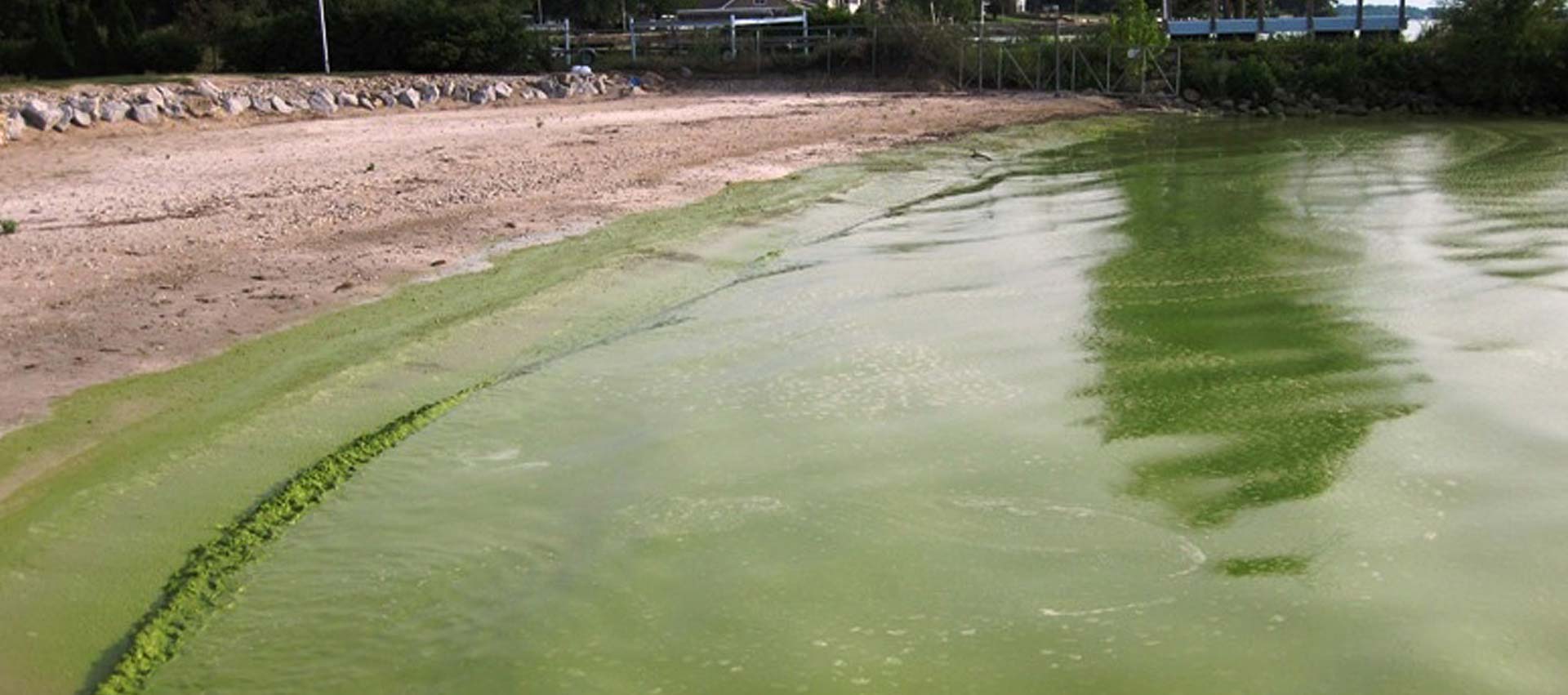Algae are naturally-occurring microscopic organisms that are found in fresh and salt waters of Virginia and around the world. Many are beneficial because they are major producers of oxygen and food for many of the animals that live in these waters.
Most algae do not harm people, wildlife, or the environment. But some types of algae in Virginia can be dangerous. Algae species in fresh and salt water may multiply rapidly when environmental conditions are favorable for their development. The great number of algal cells in the water results in what is called an algal bloom.
A bloom often (but not always) results in a color change in the water. Algal blooms can be any color, but the most common ones are red or brown and are known as either “red” or “brown” tides. Most algal blooms are not harmful but some do affect fish and humans, as well as other animals like birds and marine mammals. These are known as Harmful Algal Blooms (HABs). If water is discolored, murky, has an odor, or if there appears to be a film on the water surface, swimming is not advised for humans or pets. Please submit your observations of algae or a fish kill using our HAB online report form so the HAB Task Force can conduct surveillance of the area.
To report health effects contact the HAB Hotline: 1-888-238-6154
Quick Links
- Cyanobacteria Bloom Response Job Aid (2024)
- Guidance for Cyanobacteria Advisory Management (Approved 2021)
- Algae Bloom Resources (signs, guidance, etc.)
- Algal Bloom Map
- Report a HAB online
- Private Waterbody Managers Toolkit - FAQs and Resources
- Privately Owned Waterbodies - DWR list of Lake Management Firms
- Mill Creek HAB Status Report 10.24.24
- Lake Anna - 2025 Seasonal Response Discontinued- 11.7.24
- North Fork Shenandoah River - 2025 Seasonal Response Discontinued - 11.7.24
- Smith Mountain Lake – Blackwater River Status Report 8/24/2023
- Lake Anna Waste Heat Treatment Facility
- Lake Gaston Lyngbya (Microseira) wollei Factsheet
- 2024 Media Releases - HAB Advisories
- HAB FAQs
- Drinking Water Protection - HAB Resources
- Cyanobacteria (Blue-Green Algae)
- Virginia Harmful Algal Bloom Task Force
- CDC HAB-Associated Illness
- EPA CyanoHAB
- Pfiesteria
U.S. EPA - Protect Yourself and Your Pooch
Learn to Identify Cyanobacteria Blooms - ITRC
U.S. EPA - Algal Blooms Can Harm Your Health

